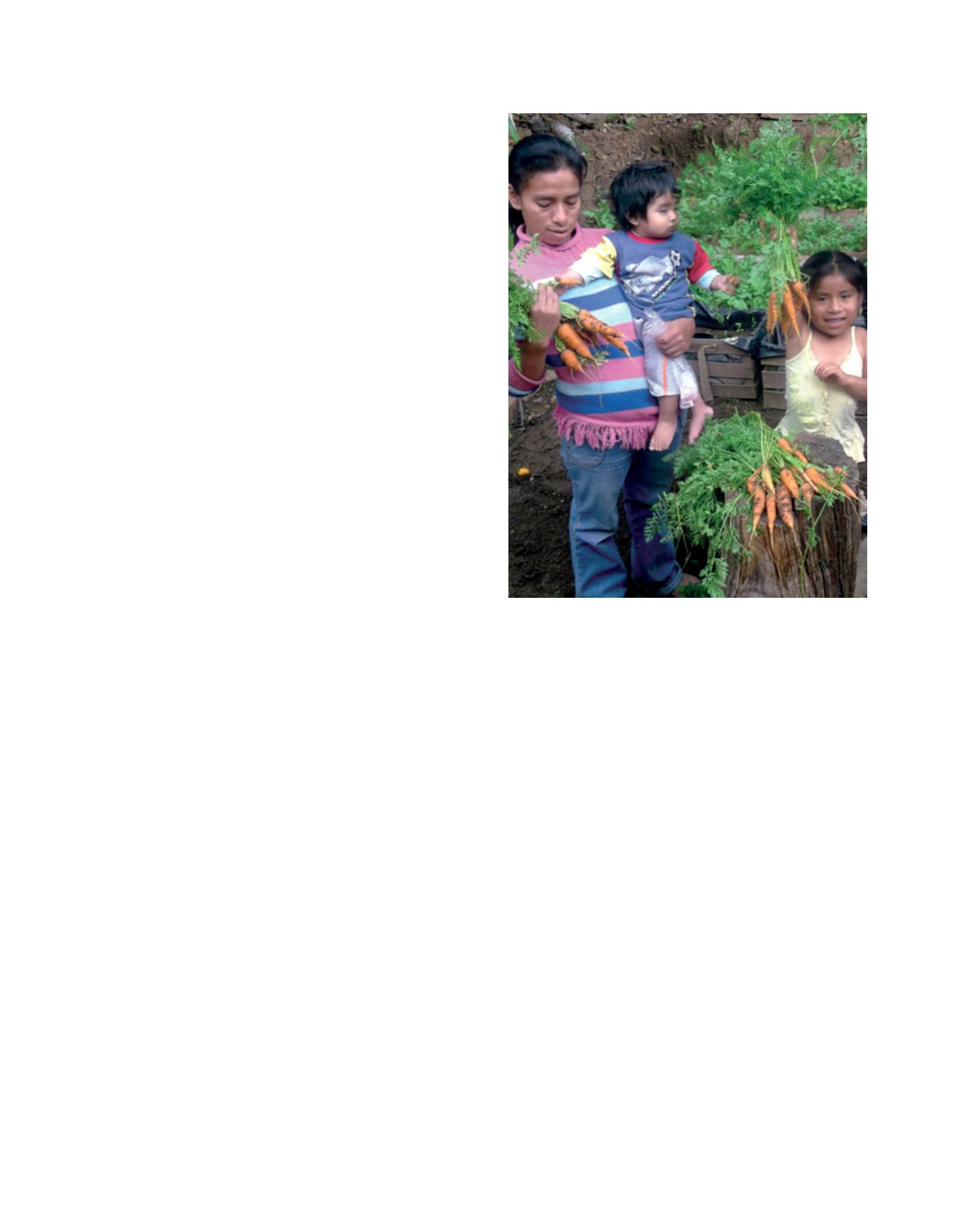

[
] 31
food costs provide agricultural exports. Railroads were built to
encourage expansion of agricultural production for export.
The resulting social inequity, deprivation of access to farm-
land, and the exploitation of peasants and workers led to repeated
rebellions, which spawned the Mexican revolution of 1910,
leading to a new Constitution in 1917. The new constitution
authorized agrarian land reform. By 1940 most of the country’s
arable land had been redistributed to peasant farmers, benefitting
only approximately one-third of all Mexicans. However, declin-
ing productivity during 1980s, and mounting food imports gave
Mexican President Salinas, elected in 1988, political momentum
to reform the land tenure system. The following reconsolidation
of agricultural land into large corporate farms set the stage for
the North American Free Trade agreement of 1994 (NAFTA)
between Mexico, the US and Canada. As in the US and Canada,
family farms in Mexico are being consolidated into large farm
business intended to compete in global markets.
Challenges to family farmers
North American farm families today face a number of major chal-
lenges – some continuing and others new. Farm policies that
increasingly support the industrialization of farming in a quest
for economic efficiency have intensified with the implementation
of NAFTA. The increasing emphasis of farm policies on mono-
functional economic efficiency makes it even more difficult for
multifunctional family farms to survive economically while main-
taining their social and ethical commitments tomultifunctionality.
During the 1960s and 1970s, the focus of US farm policy
shifted from ensuring food security through preserving family
farms to food security through agricultural productivity. A more
efficient agriculture was intended to reduce food prices, making
adequate quantities of wholesome and nutritious food affordable
for everyone. The strategies of industrial agriculture are speciali-
zation, standardization and consolidation of control, which
inevitably leads to larger and fewer farms. Every major farm
programme in the US since the New Deal era of the 1930s, in
one way or another, has promoted agricultural industrialization
– thereby promoting consolidation of agricultural production
into fewer and larger economic production units.
As agricultural production expanded well beyond needs
for domestic consumption, farm policies shifted to expansion
of export markets. Farm policies in Canada today are largely
driven by international trade considerations. The emphasis on
international trade further narrows the focus of farm policies
on monofunctionality and economic efficiency. Thus, NAFTA
has severely affected multifunctional family farmers in all three
countries, especially inMexico, where the agreement accelerated
agricultural consolidation and industrialization, particularly in
the northern regions of the country.
Another major challenge to family farmers in North America is
the advancing age of farmers. Young people without farm back-
grounds have begun to operate small farms in the US and Canada,
but not enough to offset those leaving established farms. If current
trends continue, even more farms will become consolidated into
monofunctional farm businesses, leaving smaller multifunctional
family farms. Much of the knowledge and wisdom that will be
needed to sustain family farms resides in the hearts and minds
of today’s ageing farmers. Industrial agriculture dominates public
research and education, particularly the land-grant universities.
As a result, multifunctional family farmers have turned to learning
fromeach other. Unfortunately, when today’s ageing farmers retire
or die, their personal knowledge and wisdom will go with them.
Young people who do choose farming as their occupation
also face a major challenge in gaining access to land. Prices of
farmland are at record high levels in the US as a consequence
of expanding demand in global markets and domestic biofuel
subsidies andmandates. Government programmes for ‘beginning
farmers’ are targeted primarily to new commodity producers, not
new family farmers who produce for local markets. As much as
70 per cent of US farmland may change hands over the next two
decades.
5
Non-farm investors and large private equity investors
have become major competitors in farmland markets. Access to
farmland for family farmers is a challenge not likely to be met
without significant changes in land tenure policies.
Farmers traditionally have prided themselves on their inde-
pendence. This may have been an asset to family farms in the
past but it could be a major obstacle in the future. Today’s smaller
family farms that are producing for local niche markets will need
to scale up their operations. To meet this challenge, literally
thousands of farmer alliances, cooperatives, networks and food
hubs are being established all across the US and Canada.
6
These
new food networks must follow the organizational principles
of earlier cooperative organizations if they are to maintain their
multifunctionality and thus their sustainability. Those farmers
who meet the challenges of cooperation may well find it to be
one of the most economically and personally rewarding aspects
of family farming in the future.
Family farmers in Mexico display the fruits of their labour
Image: Valentin Rivera Luna
R
egional
P
erspectives
















